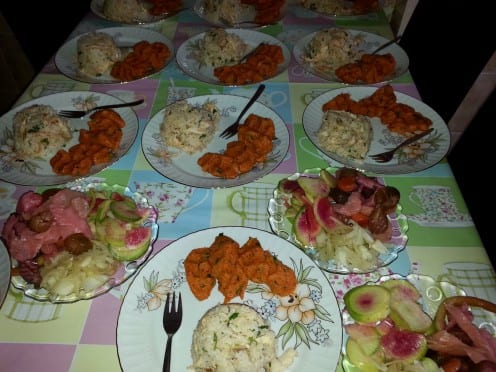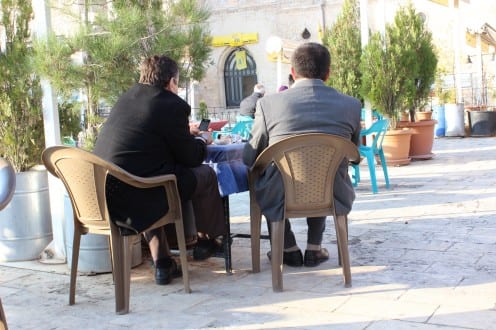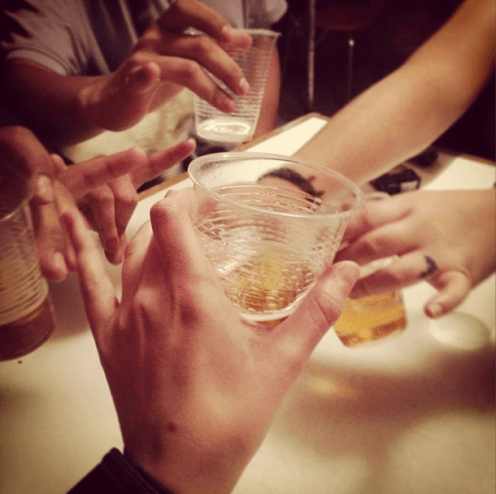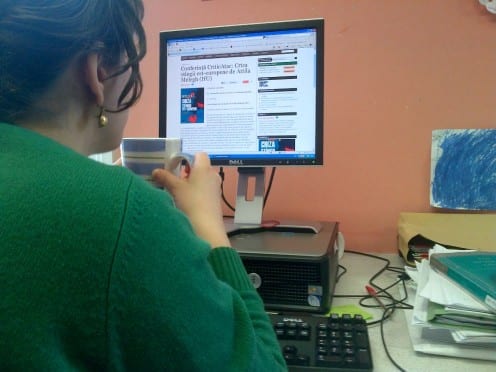Social media and the shifting boundaries between private and public in a Muslim town
By Elisabetta Costa, on 26 March 2015

Photo posted on the Facebook profile of a research participant
Facebook is designed to encourage people to reveal information about themselves, and the market model of Facebook’s founder Mark Zuckerberg is based on sharing and radical transparency (Kirkpatrick, D. 2010). Also, scholars have largely focused on the “disclosure effect” of Facebook, and have studied the ways this social media has led people to publicly display private information about their daily life.
In Mardin, however, people are really concerned about disclosing private information, facts and images. I’ve been told several times by my Mardinli friends, that the public display of photos portraying domestic spaces and moments of the family life was sinful (günâh) and shameful (ayıp). The variety of the visual material posted on Facebook in Mardin is, indeed, quite limited compared to what we are used to seeing on the profiles of social media users in other places, like London, Danny, Jo or Razvan’s fieldsite. For example when people in Mardin organise breakfast, lunch or dinner at their house, and invite family’s friends and relatives, they rarely post pictures portraying the faces or bodies of the participants at the feast. They rather prefer to show pictures of the good food. In this way they can reveal and show off their wealthy and rich social life, and at the same time protect the privacy of the people and of the domestic space. Yet, when images portraying people inside the domestic space are publicly displayed, these tend to be very formal and include mainly posed photography. By doing so, the aura of familiarity and intimacy is eliminated, and the pictures are more reminiscent of the formal images common in the pre-digital era.
Whereas in most of the cases people tend to follow online the same social norms regulating the boundaries between private and public offline, it’s also true that these boundaries have increasingly shifted. The desires of fame, notoriety and visibility is very strong among young people living in Mardin. For example, after posting a picture, it’s quite common to write private messages to friends asking them to “like” the image. I’ve also been told off a few times by my friends in their early twenty, for not having liked their pictures on Facebook. Facebook in Mardin is a place to show off, and to be admired by others. It’s the desire of popularity and fame that has led people to publicly display moments from their daily life that have traditionally belonged to the domestic private spaces. By doing so, the private space of the house has started to increasingly enter the public space of Facebook, despite limitations and concerns. Also the body and the face of religious headscarf wearing women have been widely shared on the public Facebook, apparently in contrast with religious norms. A friend told me: “Facebook brings people to behave in strange ways. A religious covered woman I am friends with, on Facebook posts the pictures with her husband hands by hands” This public display of the conjugal life contrasts with the normative ideas Muslims from Mardin have of the private and the public. Several other examples show that Facebook has led people to publicly display what has traditionally belonged to the domestic and private sphere.
In Mardin the culture of mahremiyet, the Islamic notion of privacy and intimacy (Sehlikoglu, S. 2015), continues to regulate the boundaries between the private and the public both online and offline, but with significant differences between the two.
References
Kirkpatrick, David. 2010. The Facebook effect. Simon and Schusters
Sehlikoglu, Sertaç. 2015. “The Daring Mahrem: Changing Dynamics of Public
Sexuality in Turkey.” In Gender and Sexuality in Muslim Cultures. Gul Ozyegin
(Ed), Ashgate.
 Close
Close













